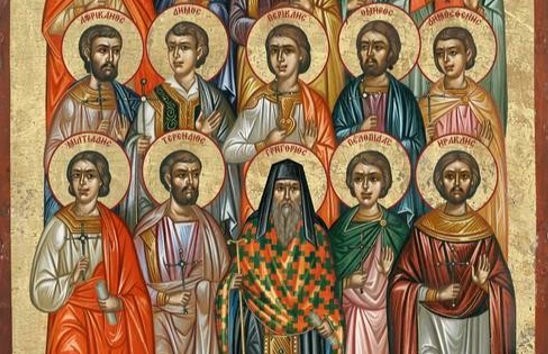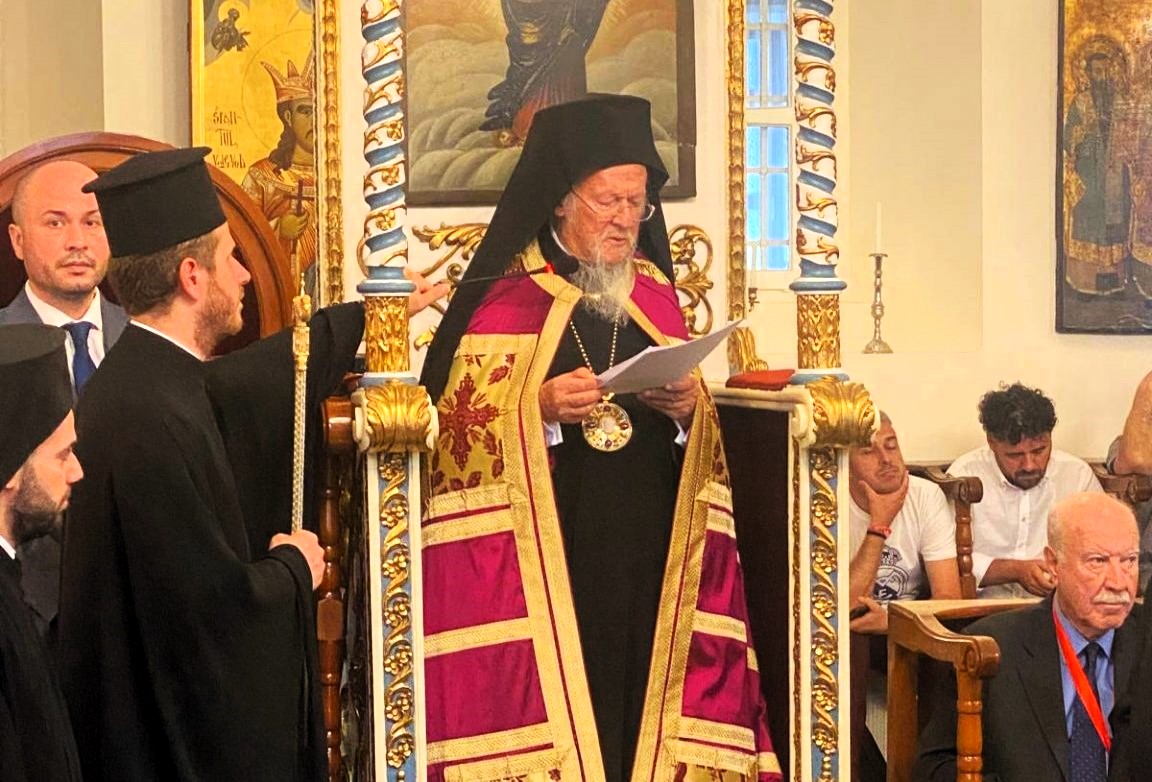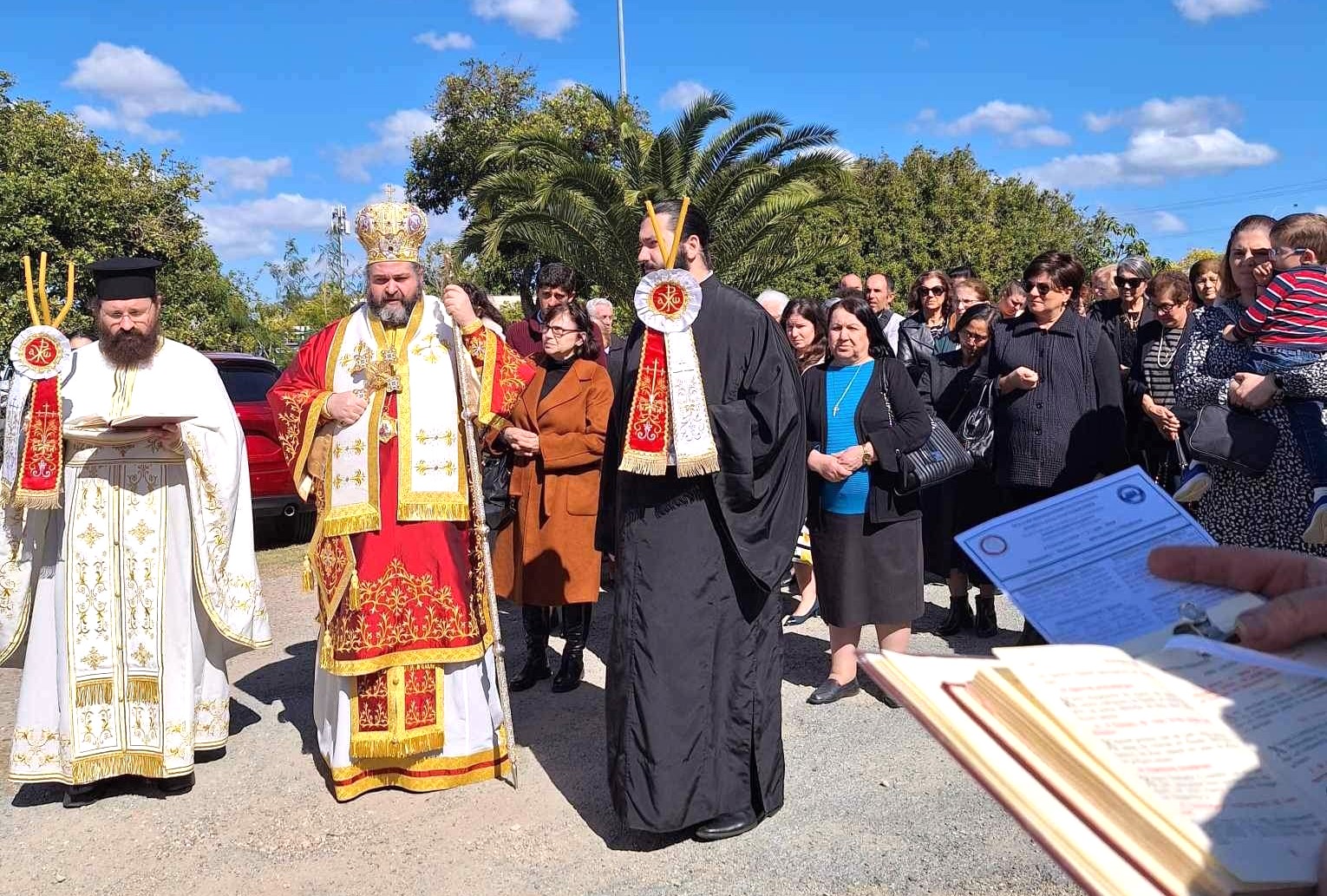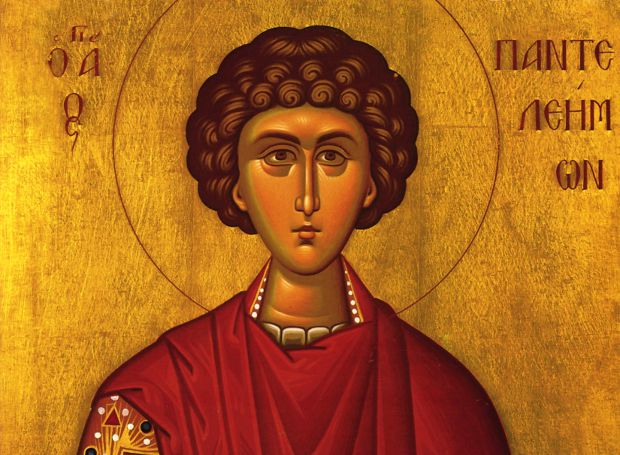Martyr Terence and 40 others beheaded at Carthage (10 April)


The Holy Martyr Terence and his companions suffered under the emperor Decius (249-251). The emperor issued an edict commanding all subjects to offer sacrifice to the pagan idols.
When the governor of Africa Fortunianus received this edict, he gathered the people into the city square, set out cruel instruments of torture and declared that everyone without exception had to offer the sacrifice to the idols.
Many, afraid of torture, complied. However, Saint Terence and forty other Christians bravely affirmed their faith in the Savior and ridiculed the idols. Fortunianus was amazed at their boldness and he asked how they as rational people, could confess as God, One Whom the Jews crucified as a malefactor.
Saint Terence answered that their belief was in the Savior, Who voluntarily endured death on the Cross and rose on the third day. Fortunianus saw that Terence inspired the others by his example, and so he ordered him to be isolated in prison with his three closest companions: Africanus, Maximus, and Pompeius. Fortunianus was determined to force the rest of the martyrs, including Zeno, Alexander and Theodore, to renounce Christ.
Neither threats nor terrible tortures could sway the holy martyrs. They burned them with red-hot iron, they poured vinegar on the wounds, they sprinkled on salt, and they raked them with iron claws. In spite of their sufferings, the saints did not weaken in their confession of Christ, and the Lord gave them strength.


Fortunianus gave orders to lead the martyrs into the pagan temple, and once again he urged them to offer sacrifice to the idols. The valiant warriors of Christ cried out, “O Almighty God, Who once sent down fire on Sodom for its iniquity, destroy this impious temple of idolatry.” The idols fell down with a crash, and then the temple lay in ruins. The enraged governor gave orders to execute them, and the martyrs, glorifying God, bowed their necks beneath the executioner’s sword.
After the execution of the thirty-six martyrs, Fortunianus summoned Terence, Maximus, Africanus and Pompeius before him. He showed them the martyrs’ bodies and again urged them to offer sacrifice to the idols. The martyrs refused. The governor put heavy chains on them, and gave orders to starve them to death. By night, an angel of the Lord removed the martyrs’ chains and fed them.
In the morning, the guards found the saints cheerful and strong. Then Fortunianus ordered sorcerers and conjurers to carry snakes and all kinds of poisonous creatures into the prison. The guards looked into the cell through an opening in the ceiling and saw the martyrs unharmed, praying, and the snakes crawling at their feet. When the sorcerers opened the door of the prison cell, the snakes bit them. The furious Fortunianus gave orders to behead the holy martyrs. Christians took up their holy bodies and buried them with reverence outside the city.
These Saints were from Africa, and they all contested during the reign of Decius, in 251. After many torments, they were beheaded at the command of Fortunatus the Governor.
They all suffered for Christ and were crowned with wreaths of glory during the reign of Emperor Decius. By order of the emperor, the governor of Africa announced to the people that everyone had to offer sacrifices to the idols. Those who resisted, the governor threatened with cruel tortures. Upon hearing about these threats, many fell away from the Faith and worshipped the idols. However, these forty remained unwavering in their faith and were subjected to torture. St. Terence encouraged his companions, saying: “Brothers, let us be on guard that we do not deny Christ our God, lest He deny us before His Heavenly Father and the holy angels.” The governor divided them into two groups. Thirty-six of them, after being flogged and having their skin scraped and salt poured into their open wounds, were all beheaded.
The first four were cast into prison with heavy iron chains around their necks, hands and feet. An angel of God appeared in the prison and touched the chains of the shackled men, and the chains fell off. After that, the angel prepared a bountiful table for them and fed them. Once again, they were brought out and tortured, and again they were imprisoned. Then the governor ordered the soothsayers to gather as many poisonous, loathsome creatures as possible, such as snakes and scorpions, and to lock them up in the same cell with the martyrs. The loathsome creatures did not touch the God-pleasers, but rather lay huddled in the corner, where they remained for three days. On the third day, when the door of the cell was opened, the repulsive creatures rushed out and bit the soothsayers. Finally, the governor pronounced the death penalty upon the four martyrs. When they were brought out to be beheaded, they joyfully chanted psalms and praised God, Who had vouchsafed them a martyr’s death. They suffered honorably in the year 250 A.D., and were found worthy of the Kingdom.
Apolytikion of Martyrs Terence and Companions
Plagal of the First Tone
All the powers of Heaven were awestruck and amazed at the achievements and deeds of the holy Martyrs of Christ; for contending well in mortal bodies clothed with flesh, they overcame the fleshless foe by the power of the Cross and invisibly subdued him. And now they pray to the Lord, that He might bestow His mercy on our souls.
Source: oca.org / goarch.org / westserbdio.org




